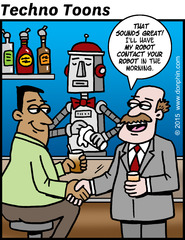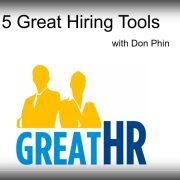“First remove the beam out of your own eye, and then you can see clearly to remove the speck out of your brother’s eye.” Matthew 7:5
All humans have their baggage, blind spots and blockages. Unless we recognize and work on them, they can sabotage our careers and relationships. Having been an employment lawyer, investigator and executive coach I’ve experienced…and been guilty of…some of the following.
- Acting out of integrity – It is difficult to salvage an executive who acts out of integrity. I usually advise employers to fire those executives. Because you cannot trust them. Trust is a delicate fabric. When you act out of integrity, you lose it.
- Inability to motivate and engage employees – This has become a “hot topic Data shows two-thirds of employees are disengaged. My experience is that leaders and managers do more to disengage employees than engage them.
- Not communicating the big picture – I’ll never forget an employee stating one time in a survey “How should I know what the vision is? I’m treated like a mushroom.” Do employees know the long-term vision and goals? Are you assuming they do?
- Inability to develop talent – I remember a Jim Collins discussion where they asked him what he considered the most important thing for building great companies. His answer was to make sure your managers hire great people. As a leader and manager, do you understand the most important thing you’ll ever do is hire great employees and then develop that talent?
- Handling pressure/stress/emotions – When we run 75 mph, it becomes all about our doingness. Our beingness gets left behind. We lose the emotional capacity to manage with grace and instead overreact, micromanage, criticize and even yell. What are you doing as a manager to steady yourself under this pressure?
- Inability to delegate functions and authority – I’ve coached many executives who claimed they are on “overwhelm.” It was their resistance to being coached . “I don’t have time for this they would tell me.” Then when I worked with them, I realized that they were six-figure executives doing $30/hr work. When you build a good team around you, constantly be delegating – not just functions but authority . Ask yourself this question – how well would my team run if I was absent for a month? Would my people have the confidence to step up and take over the functions and authorities I cannot address?
- Inability to stay focused – Many of us have so much on the plate we become scatter-brained. When scattered, our energy is dispersed. However when focused our energy is like a laser beam and powerful. The easiest way to stay focused is to plan activities and not get distracted by those “squirrels” running by.
- Non-inclusive – If you are a “my way or the highway” executive you will eventually get kicked to the curb. You are leading or managing adults, and they want to be included in decisions that affect their work or career. Remember – none of us is as smart as all of us. How are you including others in your decision making?
- Lack of transparency – Many leaders and managers still don’t like to share information. “None of your business, just do what I tell you to do” is their mantra. That might have worked 30 years ago before the explosion of transparency , but it won’t work now. When you are not transparent, your employees will think you’re hiding things from them. And they won’t give you their best.
- Poor listening skills – Are you a good listener? Can you listen to somebody for five minutes straight without judging them, nit-picking them, providing your comments, or do anything other than ask clarifying questions? Try it sometime; they’ll wonder what happened to you.
- No sense of humor – Who wants to work for deadbeat? Do people enjoy being around you? Are you a fun guy or fun gal, or has life become so serious for you that you haven’t laughed with anyone at work in ages? If you are no fun, I suggest you try to bring an appropriate sense of humor to the workplace.
- Out of alignment with the company vision, mission, value or goals – Are you aligned with the company vision, mission, value, and goals? If I sat you down in front of your CEO and asked both of you “what’s the most important work being done here?”… would your answers be in alignment? In my experience when people are not aligned they tend to vector off, and it gets worse . It’s the job of leadership and management to continually bring both themselves and the people they manage into alignment.
- Plays favorites – When I managed, I had my favorite employees. Those got their jobs done on time and without drama. However, I have met plenty of leaders and managers with favorites, and they are not necessarily the best employees, but perhaps their best friends. When you play favorites, and it’s not related to results, you cause dissension. You can also find yourself accused of discrimination.
- Failure to recognize and reward – Again, when we run 75 mph we can forget the importance of stopping to recognize and reward when people do good work. Sooner or later if you don’t provide recognition and reward, your top performers will leave for a job where they appreciated. Note: I will be recording training for Lynda.com on Rewarding Employee Performance. Should be out by the Spring of 2018.
- Won’t or can’t think strategically – Many managers are great tacticians. They are often elevated to their roles because they did their jobs better than anyone else. This does not mean they are strategic thinkers. When we think strategically, we work on our business and not just in the business.
- Unwillingness to take responsibility – This is big. The buck stops with you. The beauty of taking responsibility in a situation is it does not open you up to guilt, remorse, and regret. That’s what happens when we know we’ve been less than responsible. While responsibility feels like a burden, (since we were teenagers) it is liberation.
- Doesn’t value diversity – While many companies talk about valuing diversity, many of their executives do not. Many would rather work with people in their own image. It makes them feel safer. They feel they can trust these people more. A lack of diversity can lead to myopia. We can get caught up in our little safe world without realizing the greater one outside .
There are other factors that influence the ability to be great leaders and managers including physical or mental health problems, personal relationship problems, financial problems, and upset with company leadership.
As I state in my workshops “If it doesn’t make sense, don’t try to make sense out of it.” These are not logical problems leaders, and managers face, they are emotional ones. One reason executive coaching has become so popular.
My invitation to you is to look at this as a checklist and see which of these factors may be a weakness in your game. Then just focus on improving one item at a time. Perhaps you can spend the week showing employees how you care about them. Or think of what five hours of low-value work you can delegate. Or even better…get a coach to support you in the process!
Interested in learning more about coaching? Contact me to experience it first hand as my gift to you!
PS what follows is a doc you can use to check your head!
17 Virtues of the Great Executive
Every one of these virtues matters. Focus on one or two at a time you want to improve on. You’ll become a better and more desirable executive when you do!
- Act with integrity – is there any place you feel “uncertain about the “right” thing to do?
- Motivate and engage employees- control won’t cut it.
- Be transparent – don’t make people intentions.
- Communicate the big picture- share vision, mission, values, BHAGs. reports.
- Delegate tasks and authority – let them do it 80% you.
- Develop talent – hire and keep great employees.
- Don’t play favorites- except based on performance and attitude.
- Find the value in diversity – and the commonality in all of us.
- Get aligned- are your actions in alignment with the , mission, goals?
- Handle pressure/stress/emotions with grace – any drama only make things worse.
- Have a laugh – life’s too short to work for a stick in the mud.
- Listen, be present – it’s the best way to show care!
- Be inclusive – , none of us is as smart as all of us!
- Recognize and reward performance – or they will take their performance elsewhere.
- Stay focused – like a beam. Avoid “gotta minutes.”
- Take 100% responsibility – and avoid guilt,
- Think strategically, not just tactically – be creative.




